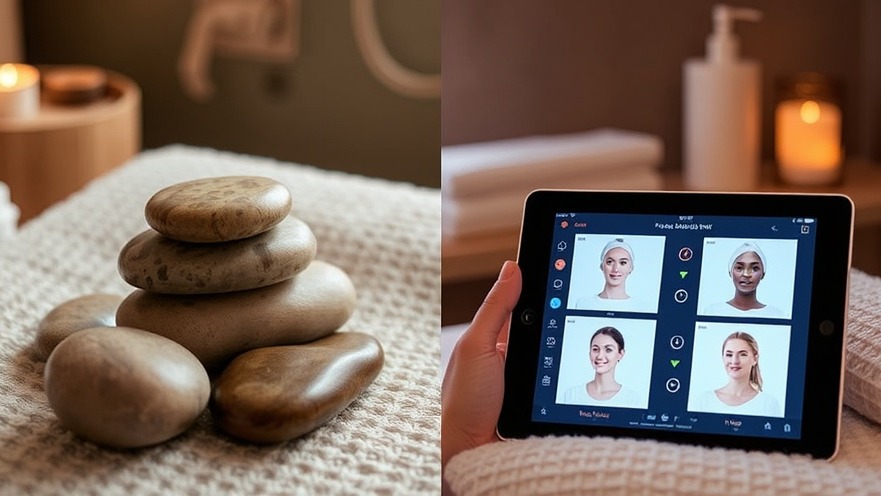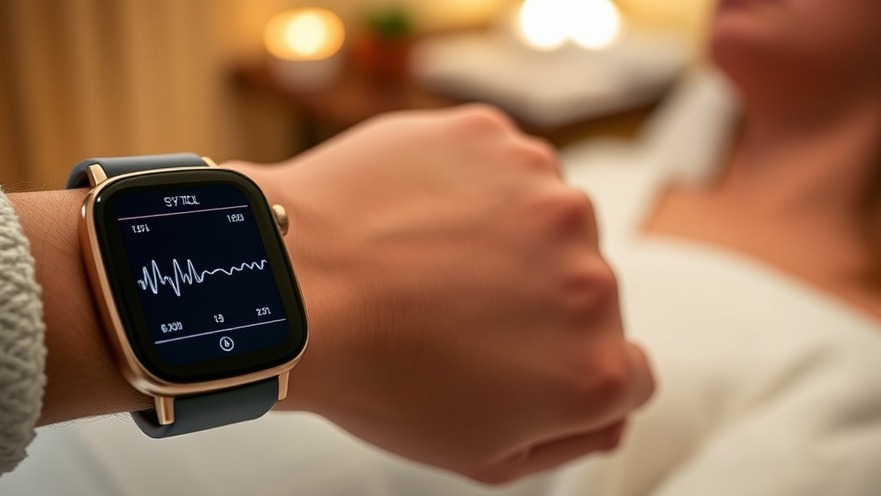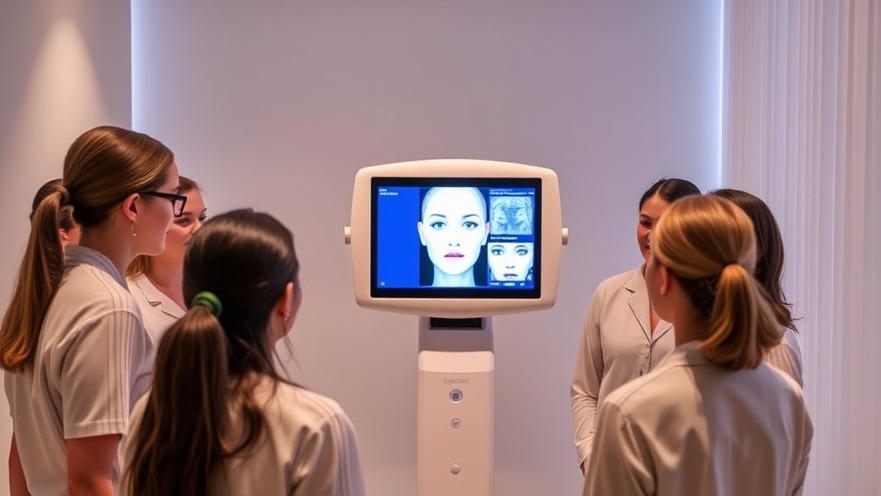
Step Into a Spa That Adapts to You
Picture this: you step into a spa, and before you’ve even said a word, the environment begins to adjust around you.
The lighting softens to match your mood, the soundscape shifts to slow your heartbeat, and the treatment bed fine-tunes its temperature to your body.
A digital mirror scans your skin and suggests the perfect facial, while an AI-guided massage table promises just the right pressure where you need it most.
What once sounded like science fiction is quickly becoming today’s spa reality. The fusion of artificial intelligence, biometric sensors, and immersive technology is creating experiences that are more personal, more responsive, and more transformative than ever before.
As Alice Chang, CEO of Perfect Corp., has said, “AI gives beauty and wellness a new dimension — personalization at scale, with empathy at the center.”
This article explores how hyper-personalized, tech-driven healing is reshaping the wellness world — from robotic massage tables and AI skin diagnostics to adaptive soundscapes that respond to your physiology.
For spa owners, it’s a chance to see what’s next in guest care. For wellness seekers, it’s a glimpse into a future where every treatment feels like it was designed just for you.
How Tech-Powered Healing First Took Root in Spas
Spas have always been about creating comfort, calm, and renewal. But if we look back just a decade, the most “high-tech” addition to a spa might have been a heated stone table or a computerized sauna control. Today, the story looks very different.
The idea of hyper-personalized, tech-driven healing grew out of a simple but powerful truth: no two people walk into a spa with the same needs.
One guest may be stressed from work and need deep relaxation, while another may be recovering from athletic training and want muscle repair.
Traditional services could only go so far in tailoring care. Technology has stepped in to bridge that gap, helping providers read the body in real time and adapt treatments instantly.
Companies like Perfect Corp., Haut.AI, and Modiface pioneered AI skincare analysis, allowing spas to recommend facials and products based on actual skin conditions rather than guesswork.
Meanwhile, innovators like Aescape created robotic massage tables that scan the body and adjust pressure for each client.
Wellness equipment manufacturers such as Gharieni introduced vibroacoustic therapy beds that use sound and vibration to help guests reach deeper states of calm.
And in hospitality, luxury hotels began experimenting with sleep-tech rooms—beds that sense when you’re restless and adjust temperature or firmness during the night.
It’s all part of a wider movement to meet wellness seekers exactly where they are, with tools that are as dynamic as the human body itself.

Breakthrough Moments That Changed Spa Technology Forever
Every big movement has a few defining “aha” moments that push it from niche idea to mainstream adoption. In the case of tech-driven healing, several milestones stand out:
AI Diagnostics Enter the Spa
When Equinox Spa introduced an AI-powered “skin age” analysis, it marked a turning point. Instead of relying on a therapist’s eye alone, clients could see a data-backed snapshot of hydration, pigmentation, and elasticity. Guests loved the clarity, and spas saw increased trust in product recommendations.XR Mirrors Make Headlines
At CES 2025, Samsung unveiled its MICRO LED Beauty Mirror, capable of scanning skin and projecting personalized skincare routines right onto a person’s reflection. The moment went viral, signaling how extended reality (XR) could move from gaming and retail into wellness.The Rise of the Robot Massage Therapist
In San Antonio, a wellness spa became the first in Texas to feature Aescape’s robotic massage. Guests could control pressure, style, and even playlist through a tablet. Local news quoted one customer saying, “With this, all the awkwardness is gone. I can relax completely because the system knows exactly what I need.”Sleep-Tech Becomes a Luxury Amenity
Hotels like Park Hyatt New York and wellness resorts across California began offering sleep-tech rooms. Suddenly, optimizing rest wasn’t a wellness extra—it was a selling point.
These milestones proved that spa technology wasn’t just a novelty. It could enhance guest experience, build trust, and even redefine what people expect when they walk into a wellness space.

Inside the Tools Driving Hyper-Personalized Wellness
The heart of hyper-personalized healing lies in real-time adaptation. Here’s how different innovations bring this to life:
AI Skin Diagnostics
By analyzing high-resolution images of the skin, AI can identify dryness, acne, fine lines, and sun damage. For guests, it feels reassuring to see data confirm what they feel. For spas, it eliminates guesswork and supports retail sales by recommending products tied directly to each person’s needs.Adaptive Environments
Imagine lying in a treatment room where the lights dim as your pulse slows, or music shifts to a softer tempo when your breathing deepens. Startups like Endel have developed soundscapes that sync with your heart rate through wearables. These responsive spaces help guests achieve deeper relaxation faster.Robotics and Touchless Therapies
The pandemic accelerated interest in touchless treatments. Robotic massage beds like Aescape’s, or Gharieni’s vibroacoustic loungers, give guests effective bodywork while reducing dependency on human staff. That doesn’t replace therapists, but it expands the menu with options that can run longer hours or at lower costs.Wearables and Feedback Loops
Spas integrating data from Oura Rings or Apple Watches can design treatments around real recovery needs—whether that’s improving sleep quality, lowering stress, or speeding athletic recovery.XR and AR Experiences
Digital mirrors and AR apps allow guests to preview results, test routines, or receive at-home guidance. This turns spa care into a continuous journey instead of a one-time visit.

What Makes Tech-Driven Spa Experiences So Different
What sets hyper-personalized spa technology apart isn’t the gadgets themselves—it’s the emotional impact they create. Guests often describe these experiences as:
“Made just for me.”
“Like the spa knew me better than I knew myself.”
“No pressure to guess what I need—it’s clear and easy.”
For spas, these innovations offer differentiation in a crowded market. While most facilities compete on décor, pricing, or service variety, tech-driven spas stand out as innovators.
They also create more predictable outcomes, which builds loyalty.
And importantly, the blend of human and machine ensures balance. A skilled therapist can use AI results as a guide, while robotic tools provide consistency that complements human intuition. This partnership enhances—not replaces—the spa professional.
How Spas and Guests Can Embrace the Future of Healing
For Spa Owners and Managers
Start small. Pilot one piece of technology, like an AI skin analyzer, before rolling out larger changes.
Train your team. Staff should know how to interpret data and explain it in guest-friendly language.
Address privacy. Be transparent about what data you collect, why, and how it’s stored.
Market the benefits. Highlight personalization and convenience in your messaging. For example: “Your skin, your story, your treatment plan.”
For Guests and Wellness Seekers
Ask questions. If you’re curious about tech-driven options, don’t hesitate to ask your spa what tools they use.
Blend old and new. Try pairing traditional treatments with a tech-driven element, like a classic massage followed by a vibroacoustic session.
Listen to your body. Tech should support, not override, your sense of comfort.

The Spa of Tomorrow Is Already Here
The rise of hyper-personalized, tech-driven healing shows us that wellness is no longer one-size-fits-all.
From AI skin diagnostics that eliminate guesswork to robotic massage systems that adapt in real time, and from sleep-tech hotel rooms to biometric soundscapes, the future of spa care is about listening—really listening—to the body.
For spa owners and managers, the message is clear: now is the time to explore, test, and embrace innovation. Even small steps—like piloting an AI analyzer or adding an adaptive therapy bed—can set your spa apart, boost guest satisfaction, and create new opportunities for growth.
For wellness seekers, it’s an invitation to be curious. Ask about the technology your spa offers. Try the new tools. Notice how they make you feel.
The promise of this movement is deeply personal: a healing journey that responds to your unique physiology, your emotions, and your lifestyle.
As Alice Chang put it best, “Personalization at scale, with empathy at the center.” That’s the real heart of this trend. When technology amplifies human care instead of replacing it, the result is not just innovation—it’s transformation.
So whether you’re a spa leader charting your next step or a guest booking your next treatment, the takeaway is the same: the spa of tomorrow is already here. All you have to do is step inside, and let it adapt to you.
Explore deeper analysis on spa business trends, treatment evolution, and market shifts in the Industry Trends category, or visit Spa Front News for more industry intelligence and wellness inspiration.
—
Authored by the Spa Front News Editorial Team — a publication of DSA Digital Media, dedicated to elevating the spa industry with expert insights, treatment breakthroughs, and destination features for spa owners, managers, and wellness leaders.
 Add Row
Add Row  Add
Add 




Write A Comment